Introduction
The percentage of completed dual agency in real estate transactions in Greater Vancouver has dropped dramatically. This is to be expected. The Real Estate Council of British Columbia, as of June 15th, 2018, barred licensed real estate professionals from representing both the buyer and the seller in a transaction.
The main reason for this ban and other strict regulations related to it is that agents practicing dual agency (also known as “double ending”) are deemed not able to completely fulfill their roles to either party given the conflict of interest they represent between both parties.
However, individual licensees from the same brokerage firm can still act within a “sphere of confidentiality” as designated agents for both buyer and seller. We worked with a team of Ph.D. researchers at UBC’s Sauder School of Business and Roomvu to examine how these dual agency regulations are impacting the consumers.
Key Takeaways
- The percentage of dual agency in Greater Vancouver and Fraser Valley real estate transactions has declined significantly from about 25 percent in 2000 to nearly 1 percent in 2019.
- The number of dual agency is consistently higher for detached properties compared to attached properties.
- From 2017 onwards, dual agency inside brokerages has mostly increased for detached properties only.
- A seasonal (quarterly) review indicates that the number of dual agency transactions dropped significantly in autumn 2018 (just after the dual agency ban in June 2018).
- The number of dual agency representations within the same brokerage has increased in autumn and winter 2018, a trend that has more or less continued in 2019 and affirms the shift of dual agency transactions from individual realtors to an “inside-the-team” approach
We found many realtors working within the same team were acting for both the buyers and sellers. This is interesting because the sellers usually hire the team leads as the designated broker to protect their interests in the sale (e.g higher sale price, hiding defects). However, by having someone within the same team representing the buyer, there could be still conflicting interests, since the realty team still works for the seller.
Details:
Based on MLS data from 2000 to 2019, dual agency plummeted from about 25% in 2000 to around 2% in 2019. (Figure 1) This decline was not only dramatic but had a consistent impact on both attached and detached properties.
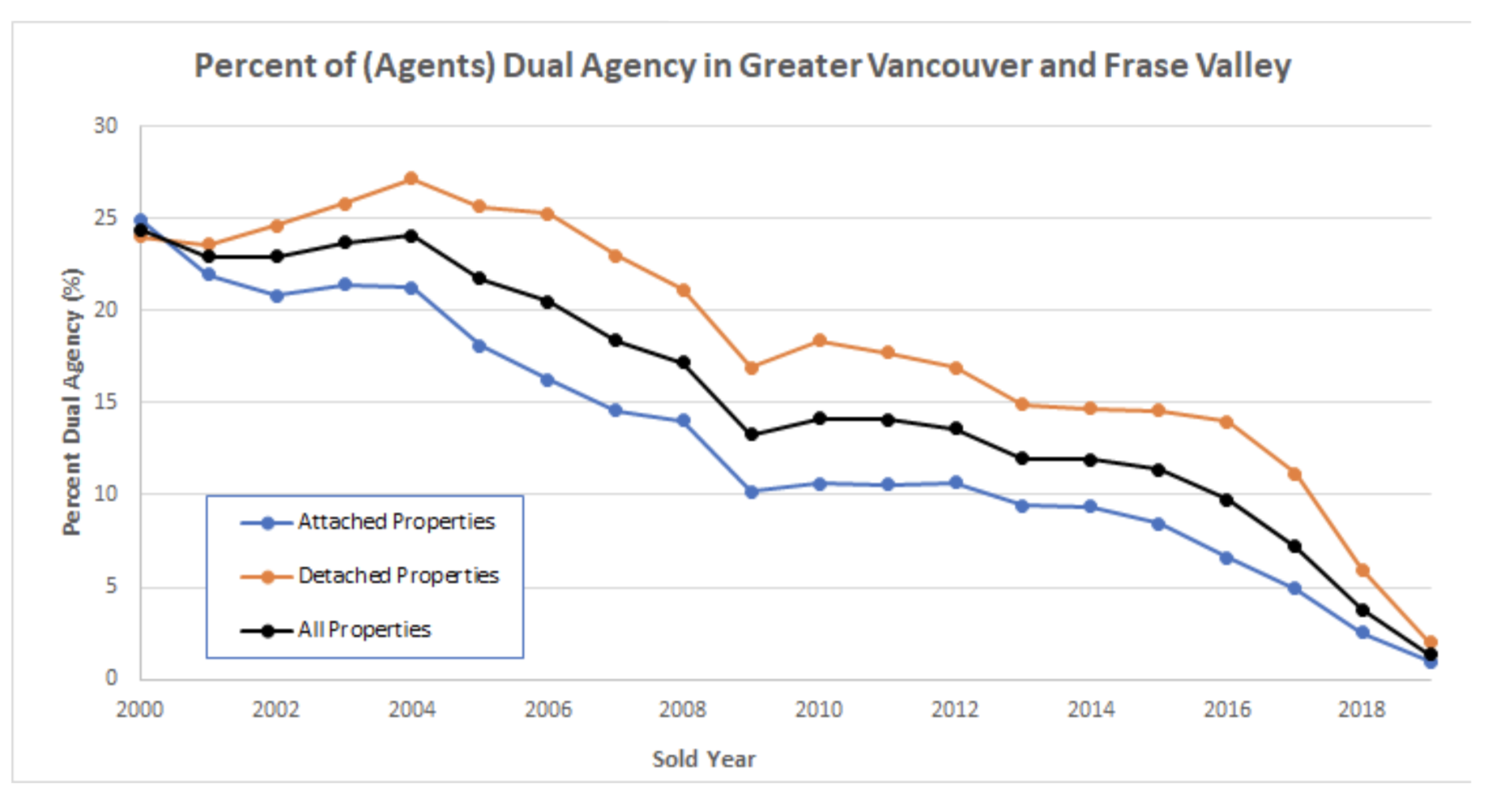 Figure 1
Figure 1
Our research also indicates an emerging trend: the ban on the double-ending practice is resulting in a shift to another form of dual agency. In this case, the buyer and the seller are not represented by the same agent; their respective agents come from the same team of real estate brokerage. We call this rising mode in real estate transactions “dual agency inside the brokerages.” It is now apparently absorbing some of the double-ending practices that were banned as of June 2018.
Notably, there are still individual agents practicing double ending in 2019, as Figure 1 also indicates. This is mainly because of the exemptions placed on the dual agency ban for remote areas underserved by licensees and where an alternative to the dual agency would be impracticable.
It is also interesting to note that the number of dual agency is much higher for detached properties compared to attached properties. We believe this could be due to the fact that typically condos, townhouses, and other attached properties are located within central areas where there are more licensees per person residing in that neighborhood compared with rural areas. In most rural areas, a significant portion of the properties are detached properties and there are fewer realtors in rural communities to represent both parties.
Buy-Sell Agents from Same Brokerage Rise
Dual agency inside brokerages (Figure 2), was mainly on a decline from 2000 to 2017. However, after 2017, dual agency inside the brokers has mostly increased especially on transactions for detached properties. It appears that from 2017 onwards, most agents representing both sellers and buyers of detached properties have begun tapping into other agents in their brokerage to split the dual role of buyer and seller representations.
 Figure 2
Figure 2
We examined in more detail the dual agency trend on a seasonal (quarterly) basis, the findings of which are presented in Figures 3 and 4. It is clear in Figure 3 that the number of the dual agency was significantly reduced in autumn 2018 just after the dual agency ban (June 2018).
The number of brokerage dual agency, on the other hand, saw an increase in 2018, a trend that more or less continued in 2019. This track tends to validate our observation that the dual agency mode of property transactions has shifted from individual realtors to an “inside-the-team” approach.
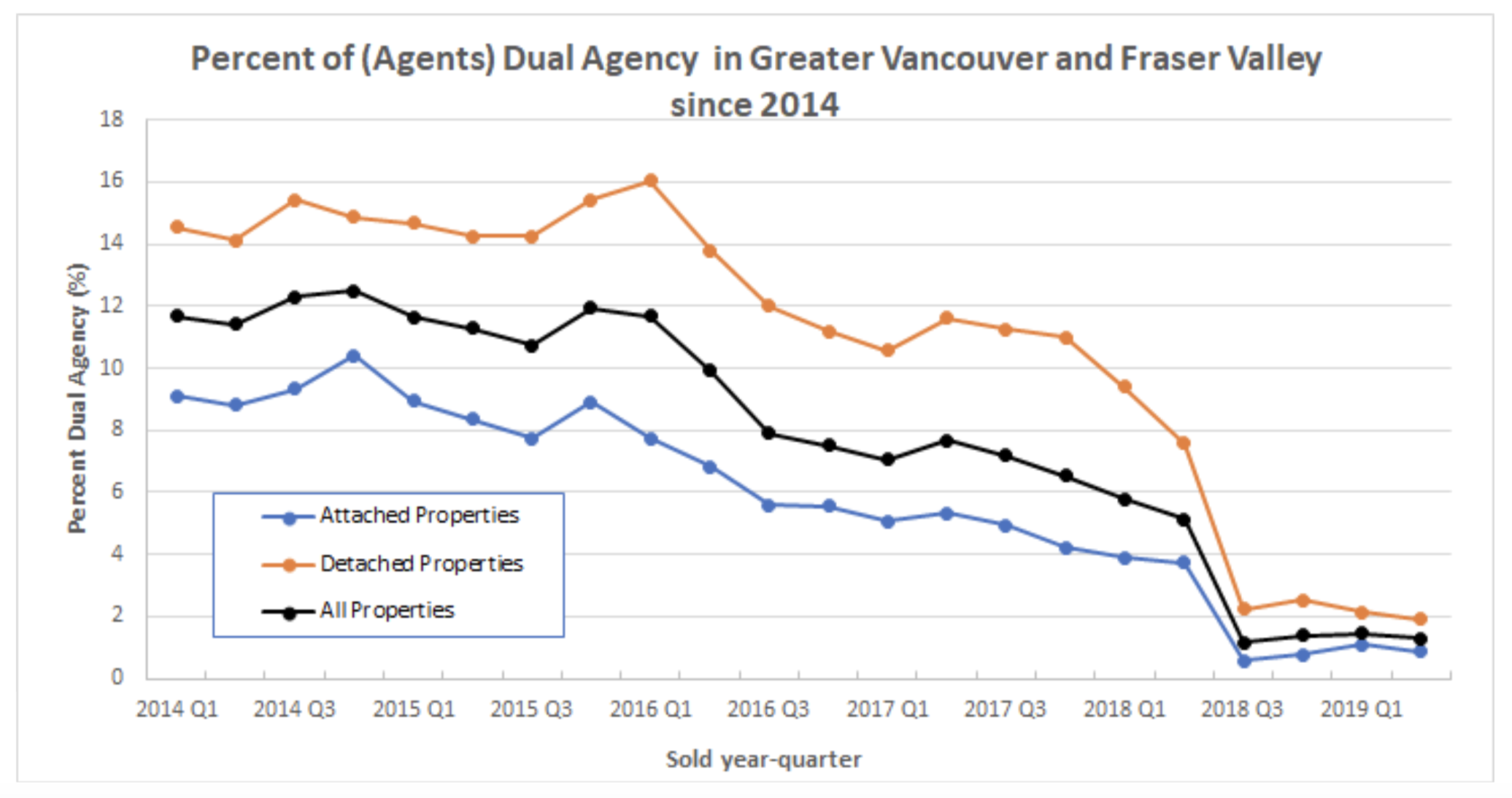 Figure 3
Figure 3
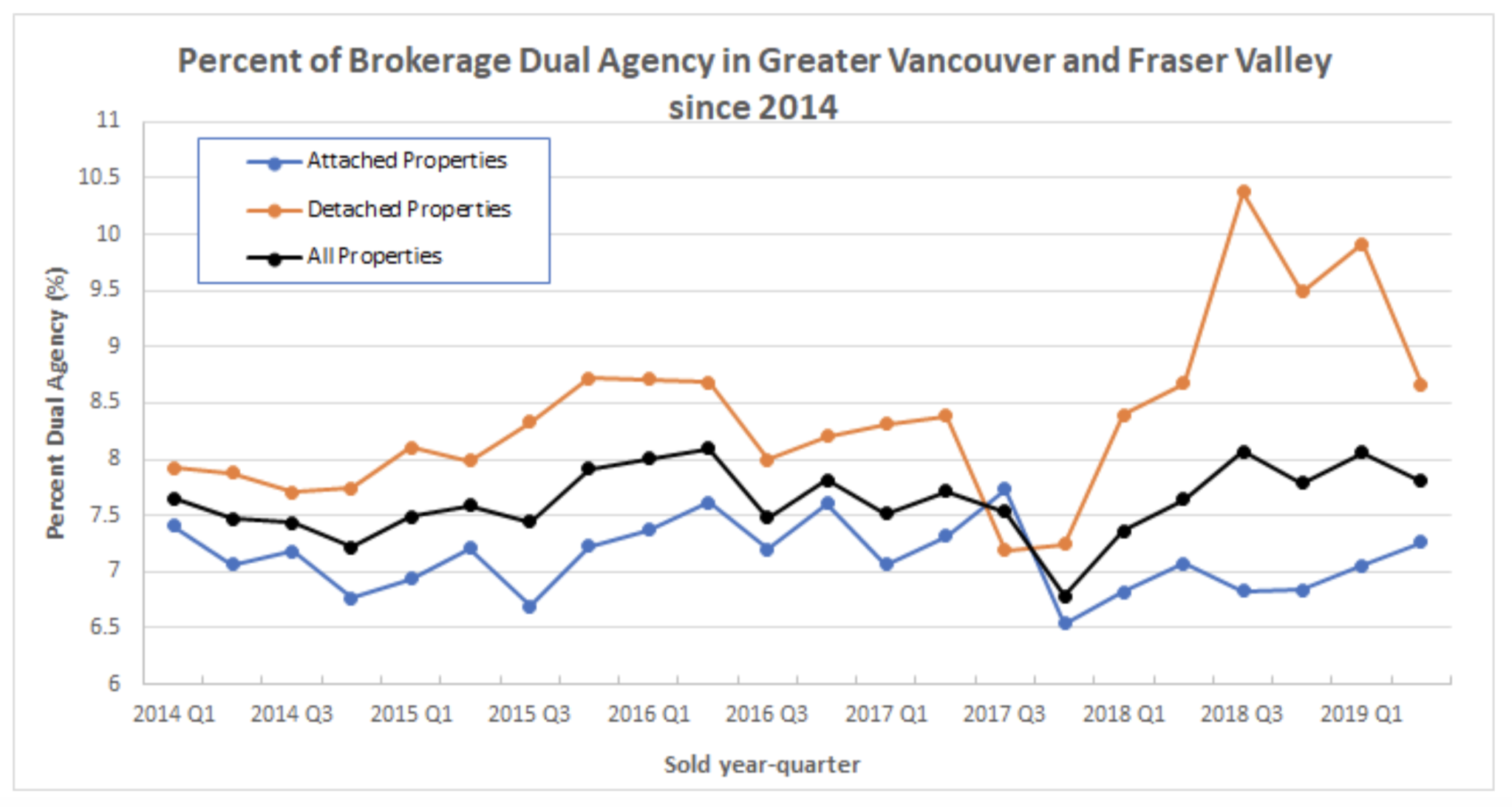 Figure 4
Figure 4
Since the percent of brokerage dual agency for detached properties increased significantly during the last two years, We have decided to compare dual agency for different ranges of prices for detached properties. Figure 5 shows that Agent Dual agency has always been higher in transactions valued at less than $1 million CAD. While this has always been the case, in the last two years, this trend has become even more marked (Figure 6) compared to properties valued at over $1 million CAD. One reason for this might be the higher quantity of less than one-million-dollar homes in smaller cities where there are fewer agents overall. So, following, the newly defined regulations, the brokerage type of dual agency has increased in these cities.
 Figure 5
Figure 5
 Figure 6
Figure 6
Double ending within the same real estate teams.
For instance, the listing on 6455 Vine Street, in Vancouver sold on August 14th, 2018 – just after the dual agency ban. The home was listed for 5,088,000 by Faith Wilson of Faith Wilson Group and sold by Keith Willingham of Faith Wilson Group for $4,840,000. You can see their team profile on:
https://faithwilsongroup.com/realtors/
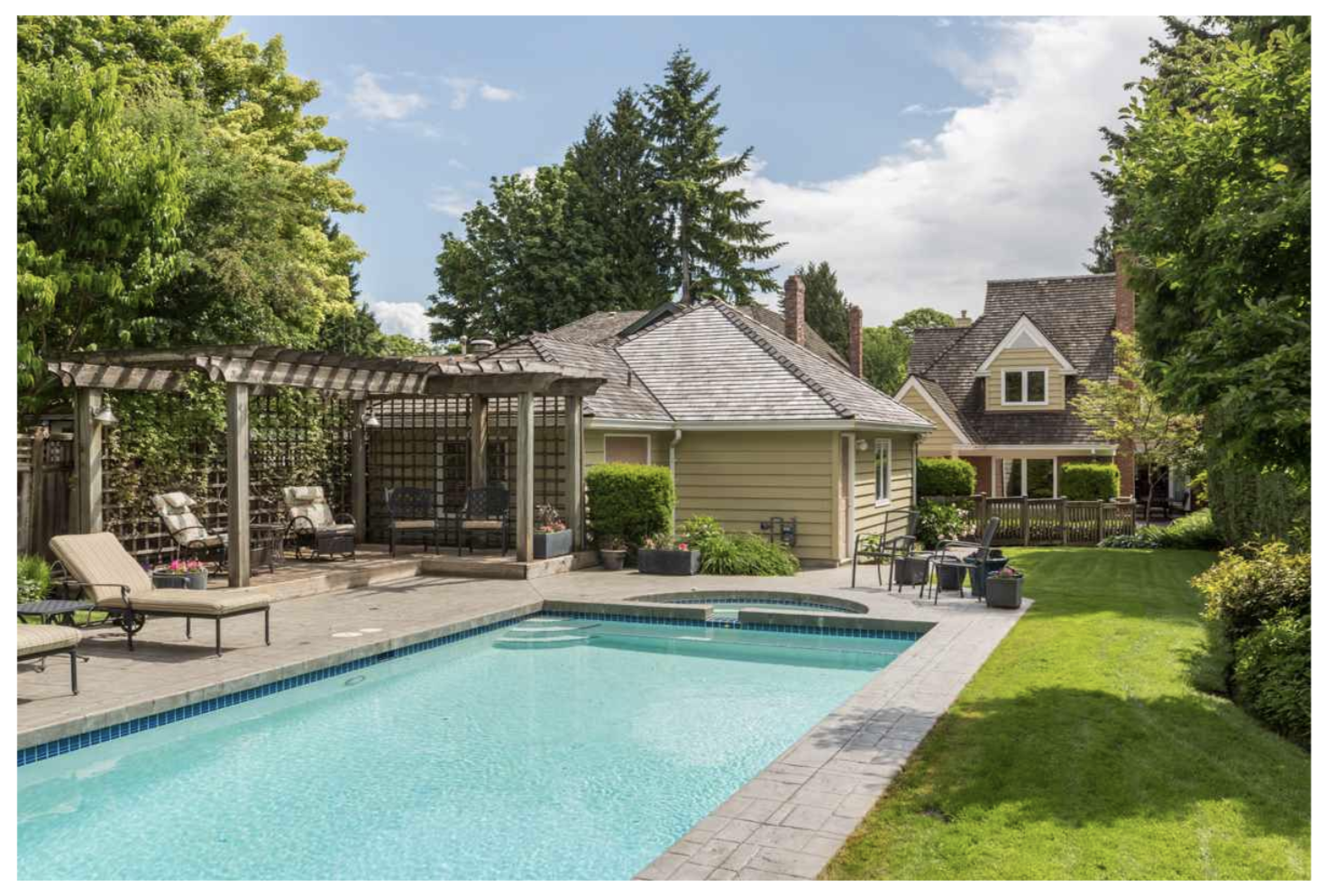
Another Vancouver listing located at 2608 11th avenue West, was sold on October 26th, 2018 just after the dual agency ban. The property was listed for $1,695,000 by Tom Gradecak Realty of WESTSIDE Tom Gradecak Realty and sold by of Shannon Vrlak PREC* of WESTSIDE Tom Gradecak Realty for $1,610,000. You can see their team profile here:
https://www.westsiderealty.ca/Team.ubr
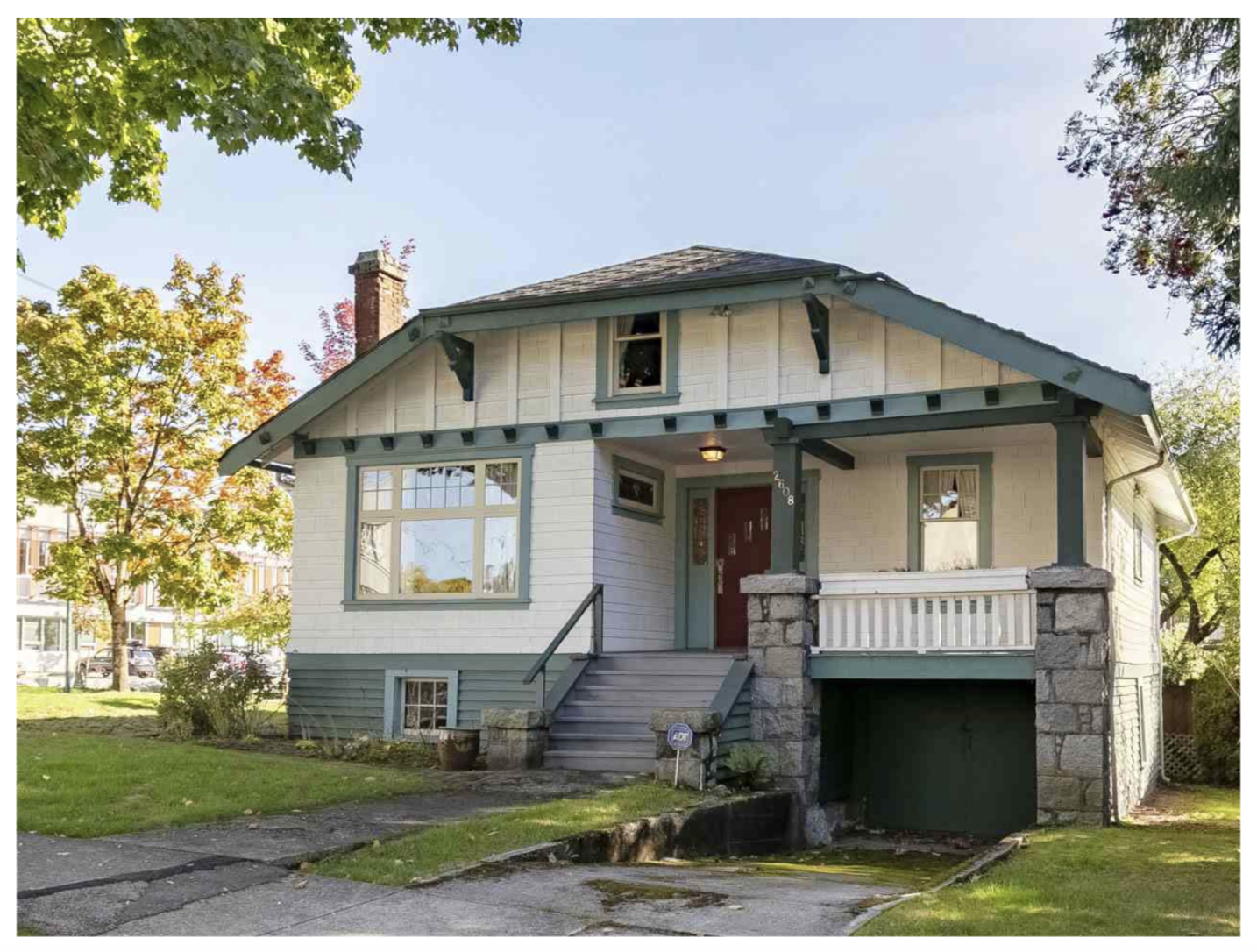
As for this listing, located at 1742 Dunbar Street, which sold on October 12th, 2018, just after the dual agency ban. The home was listed for $3,100,000 by Tom Gradecak Realty of WESTSIDE Tom Gradecak Realty and was sold by Shannon Vrlak PREC* of WESTSIDE Tom Gradecak Realty for $2,795,000. You can see their team profile here:
https://www.westsiderealty.ca/Team.ubr
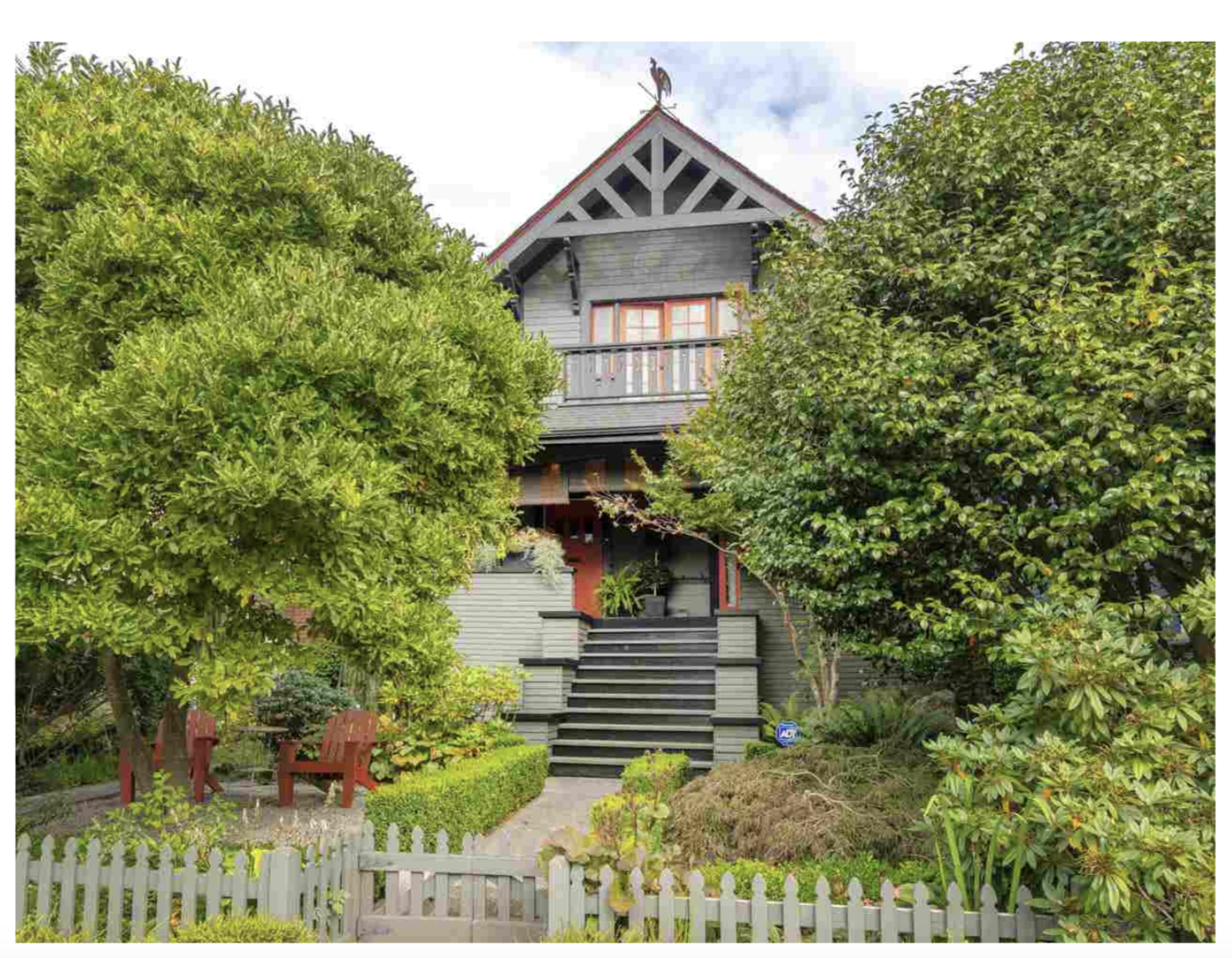
On another listing located on 301-4685 Valley Drive, which sold on July 20th, 2018 just after the dual agency ban. The apartment was listed for $1,695,000 by Tom Gradecak Realty of WESTSIDE Tom Gradecak Realty and was sold by Ylva Anderfelt of WESTSIDE Tom Gradecak Realty for $1,660,000. This listing was an estate sale which means there were possibly multiple sellers involved.
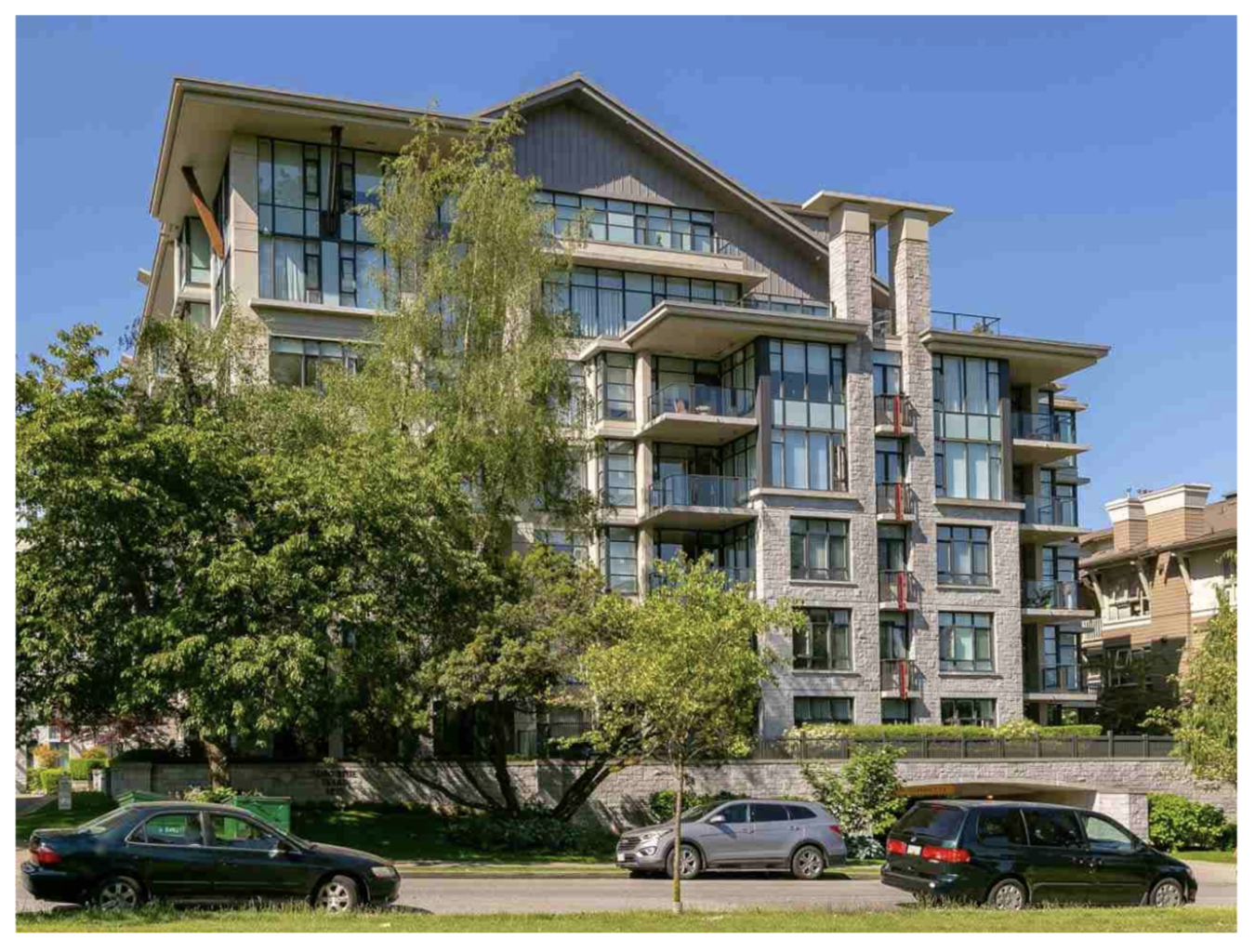
Conclusion
The dual agency ban, on the surface, appears to have curtailed the practice of having an agent represent both seller and buyer of a property in a transaction, an arrangement that challenges the neutrality of an agent between the two parties. Despite the apparent success of this ban aimed at protecting the interest of both contracting parties, double-ending looks to be simply taking a different form, one that occurs inside the brokerages and within real estate teams.
